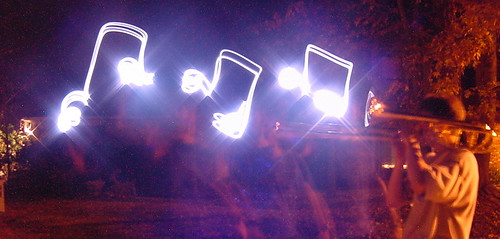More Stupid Mistakes
Doug Johnson had a great post last week on Seven stupid mistakes teachers make with technology . (OK, I am behind on reading my RSS feeds, but I have excuses). I might have been gentler in calling them “misguided or erroneous actions and assumptions,” because I feel great empathy for teachers. Look at the title of this blog, for heaven’s sake! Been there, done that…though I never taught lecture-style. My additions:
had a great post last week on Seven stupid mistakes teachers make with technology . (OK, I am behind on reading my RSS feeds, but I have excuses). I might have been gentler in calling them “misguided or erroneous actions and assumptions,” because I feel great empathy for teachers. Look at the title of this blog, for heaven’s sake! Been there, done that…though I never taught lecture-style. My additions:
- 1. Not seeking help with technology. We condemn our students who do not ask for help before the test or clarification of comments we write on their papers, but teachers don’t often speak up and participate in pointing out what they do not understand and making the effort to change that. When a student ignores the repeated comments about misplaced modifiers on his English papers, the English teacher expects him/her to ask what that is and how to fix it (if he/she does not know). Why don’t teachers inquire aloud, “What is that and how do I do it?”
- Corollary to #1: Giving up instead of risking mistakes (another thing we condemn in our students). If the first person a teacher asks for help speaks in techno-ese and says “It’s easy…watch this “ (zip-zop-zip-zop with the mouse — too quickly for a teacher to grasp), this provides an easy excuse to say, ” I can’t. I don’t get it. I don’t want to look stupid in front of the kids.”
- Asking the wrong people for help. They do a wonderful job of keeping things working, but if they have never been teachers (or taught at a similar level), the tech folks may not be the best ones to ask. If they go zip-zop-zip-zop with the mouse and don’t listen to your questions and have YOU touch the mouse — not them — find someone else. If they don’t ask you questions or recognize your fears, find someone else. If they don’t suggest simple, meaningful options to master first (see Greg Carroll’s comment on Doug’s post), find someone else.
- Thinking there is a formula or pattern to follow for student-centered, inquiry-driven, technology-infused lessons. As with so many issues in the 21st century, the real answers are more often variations on “It depends” than something formulaic and patterned. Tolerance for ambiguity and flexibility have never been strengths of many who gravitate toward becoming teachers. These skills can be learned, however, and technology happens to be a great way to master them: no product is EVER “done,” since revision is so easy and collaboration so inviting. Teacher ed programs can be guilty of this mistake in teaching new teachers lesson planning.
- Thinking there is a linear sequence of skills needed to learn about technology’s role in learning. Many commercial “professional development” package providers have created technology skills assessments and tutorials, but most of these oversimplify (see tolerance for ambiguity above). You won’t reach the end, and you’ll never be “done.” Using technology is like reading: first you decode and pronounce, but somewhere in there reading becomes a much more complex process, connecting known to unknown, thinking, reflecting, imagining…. Infusing technology is as complex and unending.
I guess Doug accomplished what he set out to do. I could go on and on writing about this. Through the blessings of technology, these thoughts will never be “done.” If you’re a teacher who has never commented on a blog post, come on—try it! Avoid #2 above!

 Today I am listening to
Today I am listening to  This is an open letter blog entry to a valued colleague because she is someone who aways responds,”Why not?” when I hatch some hare-brained scheme…and she adds her own hare-brain!
This is an open letter blog entry to a valued colleague because she is someone who aways responds,”Why not?” when I hatch some hare-brained scheme…and she adds her own hare-brain!




